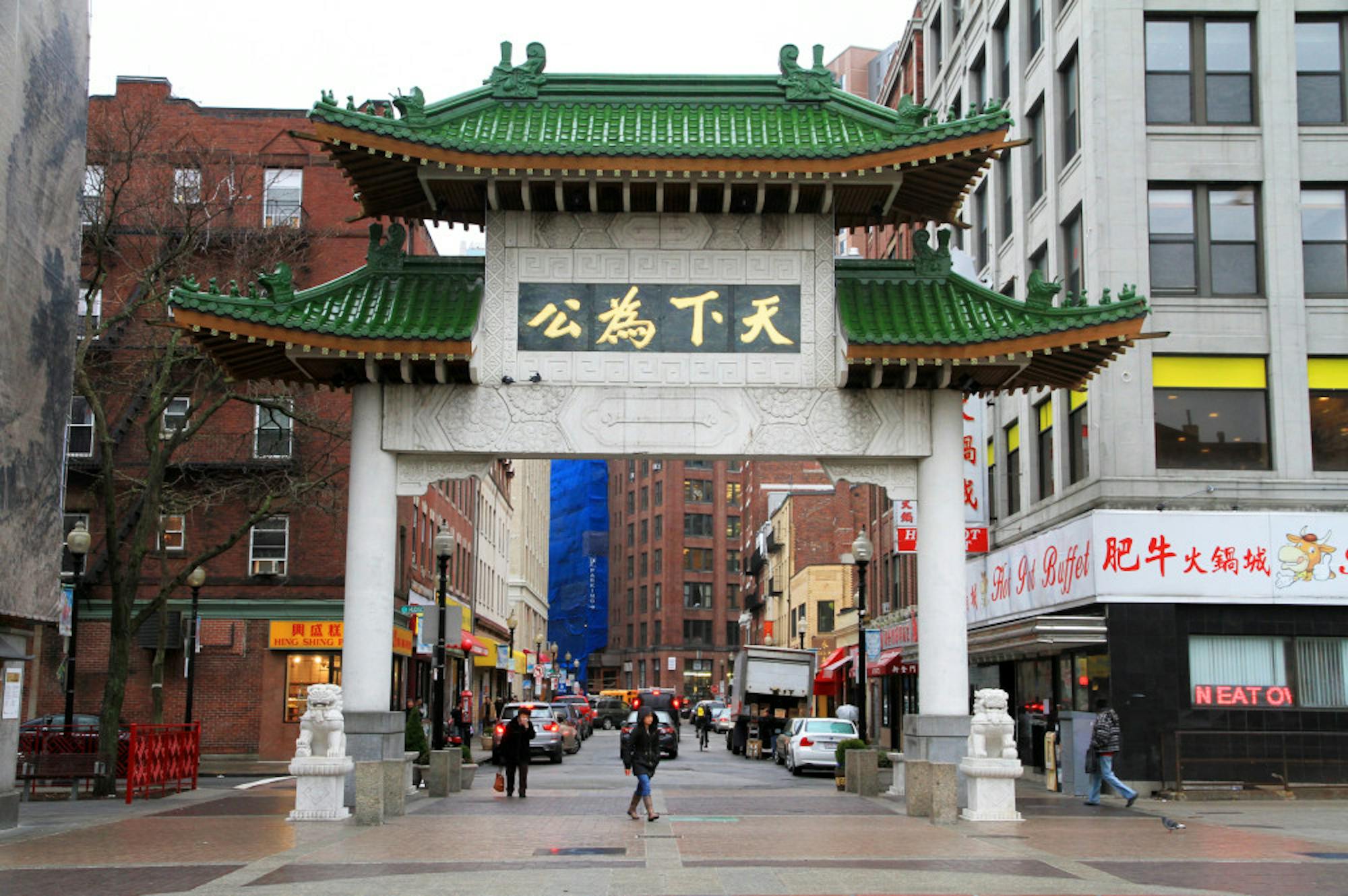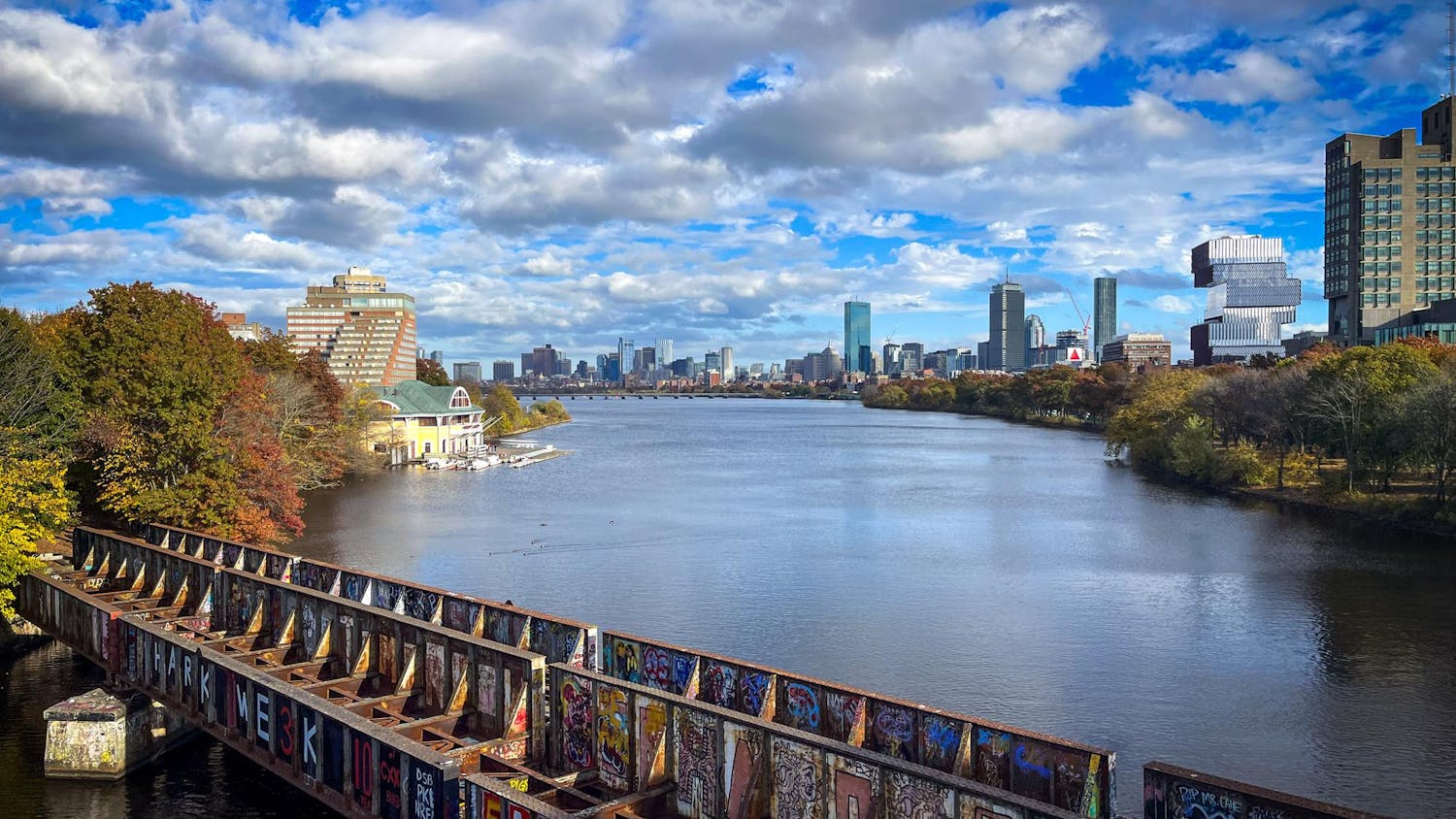This is part one of a two-part series on gentrification in Boston's Chinatown. Part one will focus on the history of the power struggle over the land. Part two will focus on the situation today.
Tufts Medical Center’s historical struggle with Chinatown over Parcel C
Of all of Boston’s neighborhoods, Chinatown is at the highest risk of gentrification, according to a 2009 GIS analysis from Tufts’ Urban and Environmental Policy and Planning Department (UEP). One of the main reasons why Chinatown is becoming gentrified is its strained relationship with Tufts Medical Center, according to Andrew Leong, an associate professor at the College of Public and Community Service at the University of Massachusetts Boston.
“[Chinatown’s] land is being gradually consumed by two medical institutions, Tufts University Medical School and New England Medical Center,” Leong wrote in his 1997 paper, “The Struggle over Parcel C.”
Parcel C is the small plot of land in the center of the Chinatown community that the New England Medical Center, now known as Tufts Medical Center, bid on three separate times -- first in 1986, then in 1988 and then again in 1993 -- in an attempt to build a parking garage. Penn Loh, director of the master in public policy program and community practice in UEP at Tufts, said this effort was an example of gentrification.
“Institutional expansion is another form of gentrification that a lot of lower income communities have had to fight,” Loh said. “This is an institution expanding and essentially taking more land for its purposes at the expense of community purposes.”
According to Leong, during the decades building up to the Parcel C negotiations, the two medical centers that later combined to be Tufts Medical Center overpowered Chinatown in land disputes, ultimately claiming nearly one third of its land.
Director of Media Relations and Publications for Tufts Medical Center Julia Jette clarified the Medical Center's relationship with Tufts.
“The Medical Center is organizationally separate from the university, and the university has its own processes and relationships with Chinatown,” Jette told the Daily in an email.
Loh explained that the medical center is very much an influence in how land is used in Chinatown.
“Where there used to be a YMCA for Chinatown … that is now a parking lot for New England Medical Center for Tufts,” Loh said. “Tufts is still a major, major player in terms of the land down there.”
The concerns about the medical center's encroachment on the community extend to housing.
“If you keep on going on Harrison [Avenue], Tufts has built all kinds of new dorms, and it’s tucked right in next to one of the biggest affordable housing units in Chinatown, called Tai Tung [Village],” Loh said.
Tufts Medical Center’s current land use encompasses a large portion of the Chinatown community, at approximately 189,400 square feet of land with a total of 12 Tufts Medical Center-owned buildings and five leased buildings.
According to the medical center’s current Institutional Master Plan (2012-2022), one of the center’s main goals is to expand the number of inpatient beds it offers, and to operate in new buildings to enhance inpatient and outpatient care.
But Chinatown is only about 43 acres in total, and is one of the most crowded neighborhoods in Boston, according to Leong. This institutional expansion effort can only add to the problem.
Parcel C: A history
To understand Tufts Medical Center’s current relationship with Chinatown, it is necessary to look to the Parcel Cstruggle of the 1980s and 1990s. According to Leong, the medical center was not acting alone -- the City government was complicit in moving the proposal forward, too. This institutional expansion emerged as the era of urban renewal was ending, which in Boston had resulted in the seizing of decrepit housing units in Chinatown by the Boston Redevelopment Authority (BRA) to be redeveloped and sold at higher prices.
According to Loh, this type of initiative constitutes a brand of gentrification known as market gentrification.
“In terms of gentrification or market gentrification, it’s where you have an area become more desirable to locate in. With more demand, prices for housing and for renting space go up,” he said. “People get priced out.”
In 1966, the city and the BRA decided that Tufts and New England Medical Center could have the rights to buy Parcel C, according to Leong.
In 1986, the medical center proposed the construction of a parking garage, but the Chinatown Neighborhood Council and the BRA stood up for the Chinatown community, just as community members would again in 1993, Leong said. At this point the BRA decided to hand over the title to theQuincy School Community Council in 1988.
“New England Medical Center’s reaction was swift and callous,” Leong said. “The hospital sued the Authority to stop the transfer of the Acorn Day Care building and playground.”
Instead of just one parcel of land, the medical center then gained the rights to two neighboring plots as part of a settlement outcome, according to Leong.
In 1993, when the medical center proposed the parking garage a third time, the BRA was in debt, and so supported the move. A government council ruled in favor of the medical center that March.
The Chinatown community knew, however, that this particular government council was funded by the New England Medical Center, Leong said. In a pushback against the backdoor approval process, a total of 2,500 community members registered their protest against the medical center’s encroachment on their land. Through grassroots organizing with groups like the Chinese Progressive Association (CPA), community members ultimately stopped the medical center’s proposal.
“In this case, this tells the story of a struggle that was at least over a decade if not more,” Loh said. “They defeated it, and you can see the development that was built.”
The City of Boston and the BRA worked with the community to contract a development project that brought 251 additional residential units for Chinatown residents online. Groundbreaking on the mixed-use building, called The Metropolitan, occurred in August of 2002.
Loh said that he used to work very closely with the Chinatown community on issues like this.
“Before I came to Tufts six years ago full time, I was with an environmental justice organization based in Roxbury called Alternatives for Community & Environment (ACE), and we did a lot of work partnering with Chinatown, mostly with the CPA,” Loh said. “The issues we worked on … a lot of them had to do with development and gentrification.”
According to Loh, ACE treats displacement as an injustice.
“We saw displacement as an environmental injustice issue because the communities that have stayed in city neighborhoods and fought for revitalization in periods where there was disinvestment and abandonment of those areas, these are the same folks now who are [potentially] being displaced,” Loh said.
The Chinatown community struggle over Parcel C was successful in part because the community tackled their concerns from this exact environmental angle. Greater Boston Legal Services, for example, became involved in the negotiations over the lot and required the medical center to conduct a full environmental review of the garage proposal, according to Leong.
In the meantime, the community interests won out, and by September, 1,692 votes against the garage and 42in favor meant the Chinatown community could develop on Parcel C to advance community needs.
Government bureaucracy and gentrification
The negotiation of Parcel C is not an anomaly for the Chinatown community. Other struggles over land and development have long plagued the neighborhood, and many of Chinatown’s urban development problems can be traced back to City Hall.
“Chinatown’s … land was also taken by the building of ... the Mass. Pike. That’s another example of displacement caused by government policy,” Loh said.
The federal government built the Massachusetts Turnpike and the Southeast Expressway on land in Chinatown in the 1950s and 1960s. According to the Asian American Legal Defense and Education Fund (AALDEF), the government took 1,200 housing units offline to build the two highways. This in turn caused a housing shortage, in addition to chronic traffic congestion and air pollution problems -- problems which the medical center's institutional expansion can only amplify, according to Leong.
The city has been making headway on adding housing units to the area by approving the construction of luxury apartment buildings, such as the Ritz-Carlton’s Millennium Place.
According to junior Wayne Yeh, who worked with the CPA as a Tisch Summer Fellow this year and is continuing his work with the CPA this fall, this process is pricing out Chinatown residents, not helping them.
“The biggest issue right now is that there are these luxury developments in Boston’s downtown area, that [are] affecting the cost of living in Chinatown,” Yeh said.
According to Loh, the development of luxury buildings is out of touch with the needs of the Chinatown residents, and [it] poses a threat to lower-income residents who have remained over the years.
“Even regularly wealthy people can’t afford to live [in these luxury towers],” he said.
Some, according to Loh, however, consider the addition of luxury apartment buildings as a move in the right direction for Chinatown: away from its past as the red light district of Boston.
“People say, ‘well that used to be the "Combat Zone," and that was horrible, it was the red light district, it was seedy, there was prostitution and there were drugs,’” Loh said.
Chinatown became known as the “Combat Zone” because the city decided to concentrate and formalize the adult entertainment district right on Washington Street in 1974. This attracted drugs, prostitution and petty crime into the cultural community, according to the AALDEF.
“It was the politics of urban development, and they put the undesirable things where the immigrant populations are,” Yeh said.
Loh pointed out, however, that pricing out residents by constructing luxury apartment towers is not the solution. According to Loh, the residents who remained in Chinatown during its years as the “Combat Zone” do not deserve to suffer today from bureaucratic injustices that date back to the 1970’s.
“To me, that’s an example of environmental injustice, too, because red light districts exist because the city allows [them] to,” Loh said.
So why is the initiative going through? Yeh thinks it's because of the land's value.
“Once Boston finally realized they needed the land that Chinatown sits on, that land became more and more valuable, they started buying off pieces of land and building luxury development,” Yeh said. “And that’s why so many people are being pushed out.”
The second part of this article can be found here.






